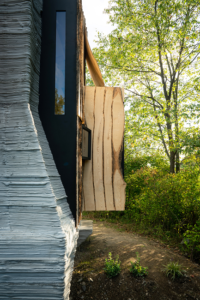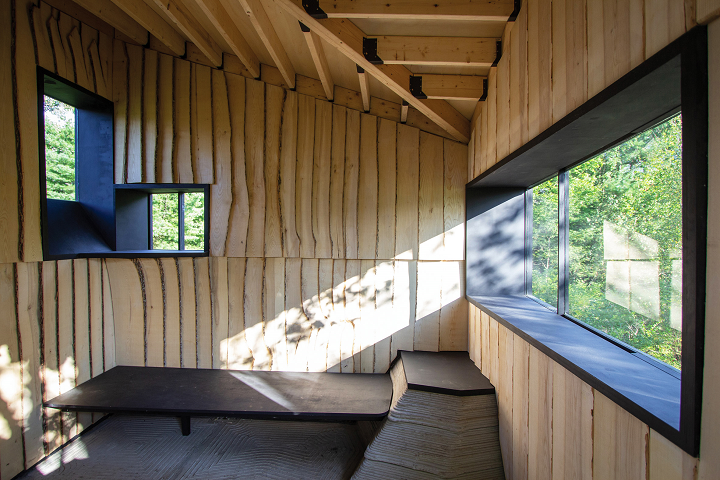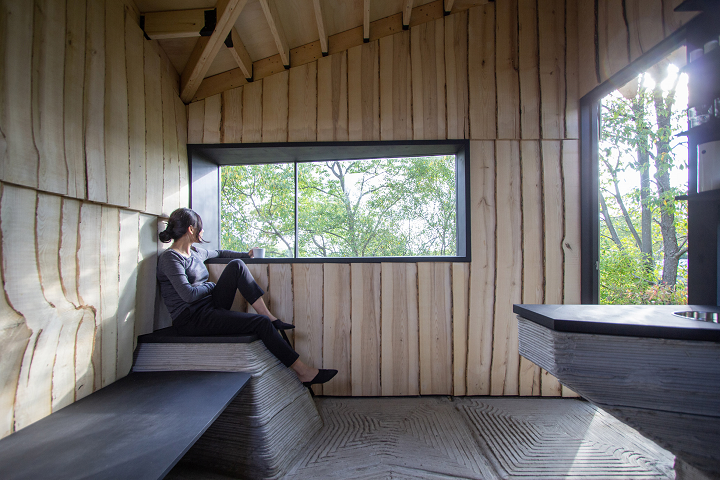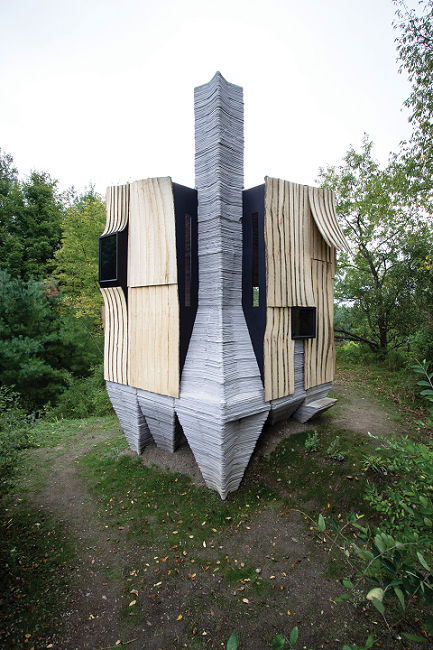Our house had several ash trees in the front and back yard while I was growing up, and we lost three of them due to various acts of nature. Ash is a very soft wood, which is how we lost one to high winds, and another split at the top because it wasn’t well-supported at the bottom. The third was removed because it had been infected by the invasive Emerald Ash Borer beetle, a nasty little bugger that’s not even native to the US but is here wreaking havoc anyway.
 Obviously, ash trees that have been infected and destroyed by the EAB aren’t often used for construction purposes, both because sawmills can’t process the wood, and due to their odd, irregular shapes. These trees are then usually burned or left to decompose, neither of which is a great option.
Obviously, ash trees that have been infected and destroyed by the EAB aren’t often used for construction purposes, both because sawmills can’t process the wood, and due to their odd, irregular shapes. These trees are then usually burned or left to decompose, neither of which is a great option.
“Unfortunately, both scenarios release carbon dioxide into the atmosphere, and so the advantage to using compromised ash for construction is that is that it both binds the carbon to the earth and offsets the harvesting of more commonly used wood species,” said Sasa Zivkovic, the Co-Principal of New York-based architecture studio HANNAH.
The Ithaca studio—founded in 2014 by Zivkovic, along with fellow co-principal Leslie Lok, Alexander Chmarin, and Alexander Graf—worked with a group of Cornell University students to create the tiny but striking Ashen Cabin, located off the grid in upstate New York. The collaborative project was meant to be a small-scale study regarding sustainable construction, and combined EAB-infested ash wood with 3D printing to build the cabin.
“By implementing high precision 3D scanning and robotic based fabrication technology, HANNAH transforms Emerald-Ash-Borer-infested “waste wood” into an abundantly available, affordable, and sustainable building material. From the ground up, digital design and fabrication technologies are intrinsic to the making of this architectural prototype, facilitating fundamentally new material methods, tectonic articulations, and forms of construction,” the studio’s website states.
As architects are looking to construct houses more sustainably, these kinds of small, off-grid residences are becoming more popular housing options, and Ashen Cabin definitely fits the bill. The tiny residence, featuring walls made of infested ash wood, is elevated by 3D-printed concrete stilts, which form the angular base of the cabin and its heavy, hulking extrusions.
HANNAH stated, “The project aims to reveal 3D printing’s idiosyncratic tectonic language by exploring how the layering of concrete, the relentless 3D deposition of extruded lines of material, and the act of corbelling can suggest new strategies for building.”
All of the cabin’s 3D-printed concrete shapes, including the tall, curved chimney and fireplace, furniture, textured floor, and prismatic legs, have a distinct linear pattern that features jagged edges. By using 3D printing, HANNAH was able to lower its carbon footprint and reduce waste by using less material than would normally be required, as a concrete mold was unnecessary.
Lok explained, “By using 3D printing, we eliminate the use of wasteful formwork and can deposit concrete smartly and only where structurally necessary, reducing its use considerably while also maintaining a building’s integrity.”
Concrete was also used to 3D print a unique seating platform, which can be opened up to use for storage. A bench made of marine-grade plywood, painted black to offer a pleasing contrast to the light siding, extends out from the seat in order to form a single bed.
A robotic arm with a band saw attachment cut the irregular ash logs into curving boards of different thicknesses. Both the exterior and interior of Ashen Cabin are covered with the wavy timber panels, which also define the structure’s four, black plywood-framed windows and were used to create other architectural features, like surfaces and shelving, inside.
The studio explained, “The curvature of the wood is strategically deployed to highlight moments of architectural importance such as windows, entrances, roofs, canopies, or provide additional programmatic opportunities such as integrated shelving, desk space, or storage.”
Focusing on the aesthetics of the cabin, the wood boards will naturally turn grey over time, so that the siding will eventually match the color of the concrete. Its 3D-printed concrete floors feature interlocking designs, and the windows are all oriented so they face the surrounding wooded landscape. The scenery makes it look like any residents of Ashen Cabin will be in their own little world.
Speaking of off-grid living, Ashen Cabin does not have power or running water. The temperature is regulated through its wood-burning fireplace and foam insulation, while a small camping sink, also 3D-printed out of concrete, provides the water.
Discuss this news and other 3D printing topics at 3DPrintBoard.com or share your thoughts in the comments below.
(All photos taken by Andy Chen, HANNAH)
The post Sustainable Cabin Built on 3D-Printed Concrete Stilts from Infested Ash Wood appeared first on 3DPrint.com | The Voice of 3D Printing / Additive Manufacturing.








